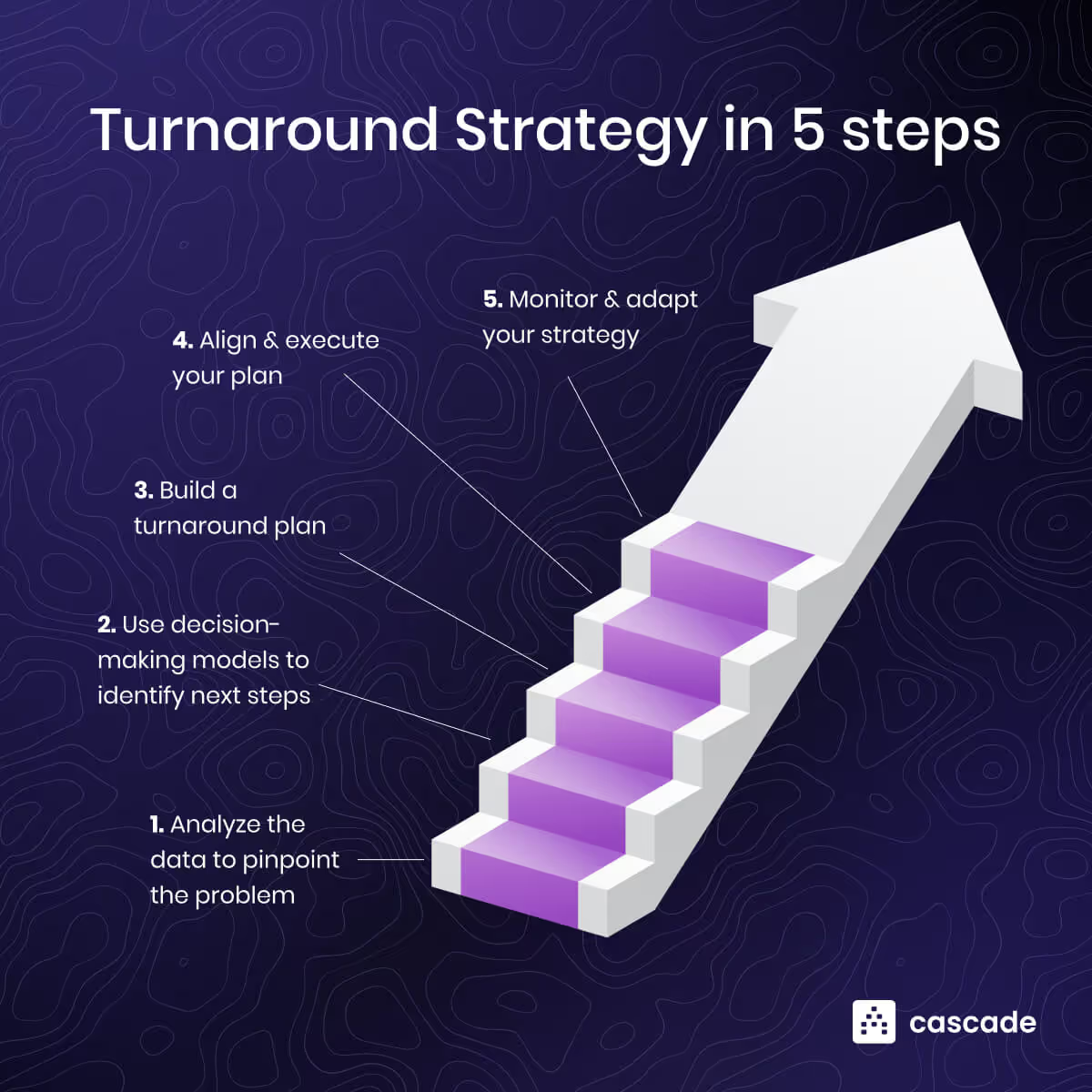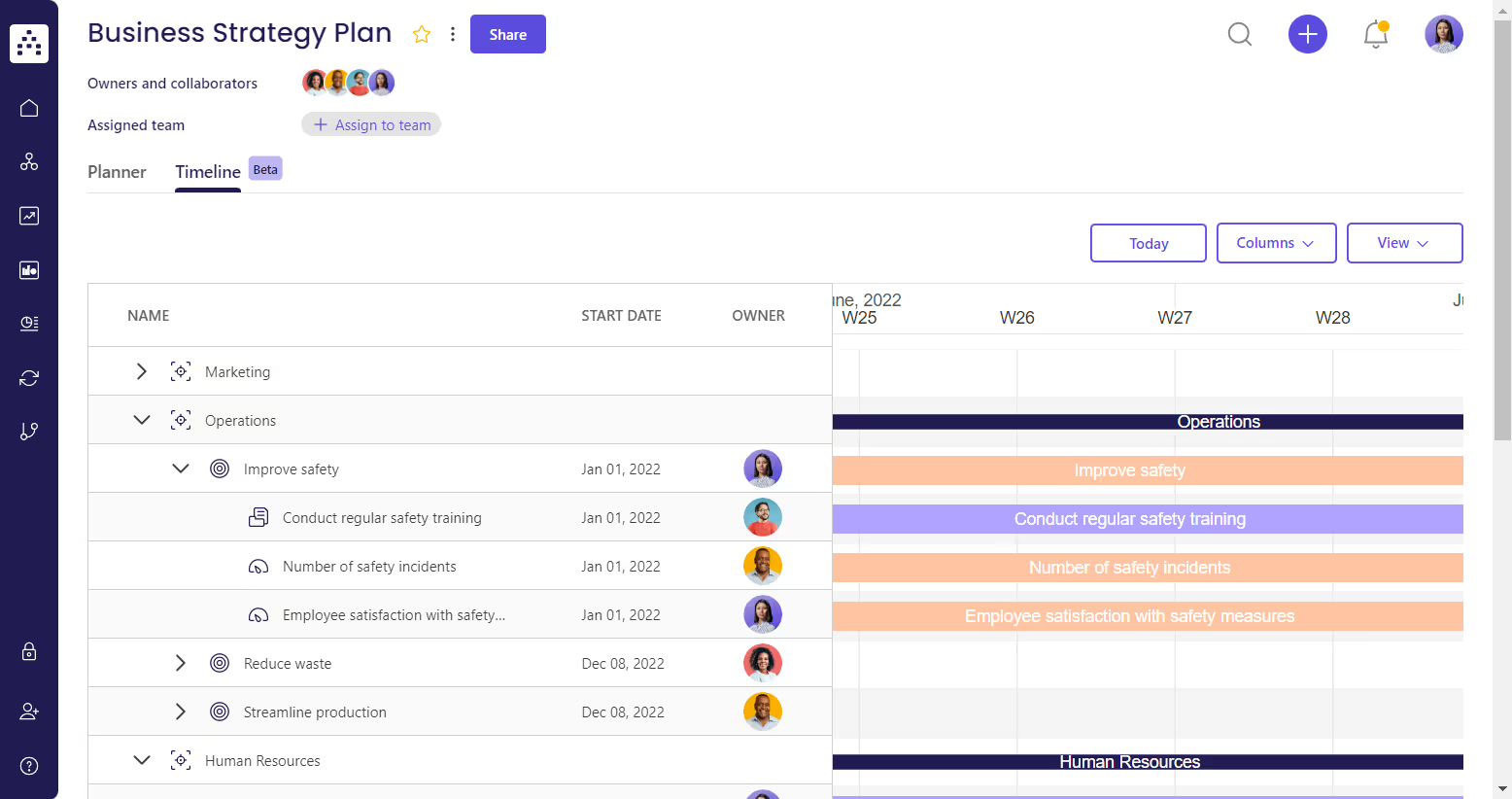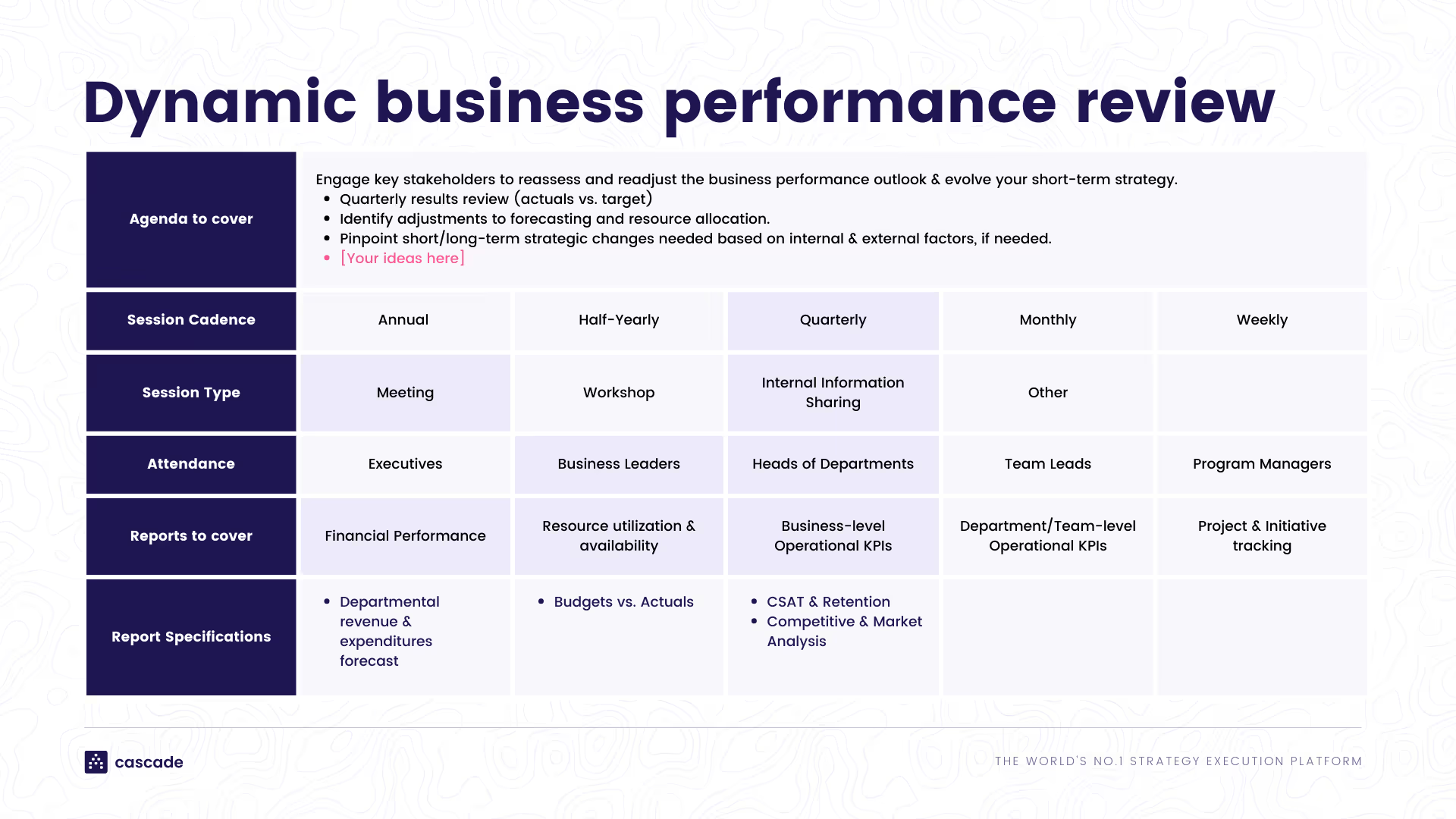When business throws you curveballs, your response time is the difference between a swing and a miss or a home run. The subtle art? Noticing the delicate wobble of change before the pitch even reaches you.
In the intense world of business, those who anticipate and strategically recalibrate don't just stay in the game—they set the rules. Whether you're feeling the squeeze or just a gentle pinch, now's the time to rewrite your playbook.
In this article, we’ll show you how to execute an effective turnaround strategy and give examples of how other businesses have successfully executed theirs.
What Is A Business Turnaround Strategy?
A business turnaround strategy is a set of actions and initiatives to steer a company out of financial distress or prolonged challenges, leading it back to profitability and resilience. Some common challenges include:
- Persistent decrease in sales
- Mounting losses
- Cash flow problems
- Insolvency
- Poor management
Turnaround strategies have specific short-term strategic objectives that aim to increase revenue, cut expenses, and restore the business’ former viability after identifying the cause of the issues.
💡A turnaround strategy is different from a change management strategy. Turnaround strategies are reactive and have a sense of urgency involved. Change management strategy, on the other hand, is a proactive approach that can be applied to situations like growth initiatives and process improvements.
When Is The Right Time For A Turnaround Strategy?
The right time for intervention varies based on each business's unique situation. However, you'll have better chances of success with early intervention. Here are indicators that your business needs to pursue a turnaround strategy:
- A consistent decline in financial performance over an extended period, evidenced by decreasing revenue, profitability, and cash flow.
- Growing losses that impact financial stability and hinder the ability to meet financial obligations, such as paying bills, meeting payroll, and investing in necessary capital expenditures.
- Increasing liabilities that become unsustainable, especially when servicing the debt becomes a significant burden.
- Significant market disruptions that cause the existing business model to become less competitive or obsolete, leading existing products to lose market share.
- An underperforming management team that finds it challenging to make effective decisions or adjust to rapidly changing situations.
- Operational inefficiencies from outdated processes, excessive costs, and declining competitiveness.
- External factors like recessions, economic downturns, regulatory changes, and natural disasters.
Types Of A Turnaround Recovery Strategy
There are several types of turnaround strategies based on the approach and focus:
- Operational cost efficiency: This strategy focuses on improving internal processes, efficiency, and cost reduction. It often involves restructuring operations, optimizing supply chains, and eliminating waste.
- Financial restructuring: This concentrates on improving the company’s financial health, with tactics like debt restructuring, cost-cutting, refinancing, and managing cash flow.
- Strategic turnaround management: This entails re-evaluating and adjusting the company’s overarching business strategy. Actions include entering new markets, discontinuing unprofitable products or services, and diversifying product lines.
- Market repositioning: This strategy concentrates on revitalizing the company’s marketing and sales tactics. It involves rebranding, pricing strategies, and sales force improvements.
- Asset retrenchment strategy: This strategy emphasizes optimizing existing assets, such as real estate, equipment, and intellectual property. Actions include selling or leasing underutilized assets to boost cash flow and improve liquidity.
- Senior management reorganization: This addresses leadership and management deficiencies and involves changes in top management, leadership training, and organizational reforms.
- Product and service innovation: This focuses on developing new products or services that improve existing ones.
- Crisis management: This strategy is executed during an acute crisis, such as a safety scandal, product recall, or PR disaster. It emphasizes reputation management, crisis communication, and taking corrective actions.
5 Steps Of A Turnaround Strategy

While there may be different types of turnaround strategies, each follows the same basic steps below.
1. Analyze the data to pinpoint the problem
Take a deep dive into your core business metrics, from revenue and profit margins to customer satisfaction scores.
Don't go at it alone, however. Engage with key stakeholders, including employees, investors, and customers to gain valuable insights and create a shared understanding of the challenge ahead.
To collect and analyze data in minutes instead of weeks, use Cascade's Metrics Library to centralize all your key business metrics. This will give you better visibility into your business’s overall health and quickly identify areas of concern.
📽Watch this short and informative video giving you a walkthrough of the Metrics Library.
2. Apply decision-making models to identify the next steps
In times of crisis, you can't afford to suffer from decision paralysis. Delays can result in missed opportunities and deepen financial losses. Indecision also leads to inefficient resource use, with capital trapped in unviable projects.
Use decision-making models and tools to quickly assess your situation and determine the next steps. Tools like a decision matrix, cost-benefit analysis, and SWOT analysis can help you prioritize and choose the most critical focus areas.
💡Speed is essential during a turnaround. Crises can evolve rapidly and what might have been an effective decision now, may not be the right move tomorrow.
3. Build a turnaround plan
With a clear understanding of the problem and the critical actions needed, it's time to craft a detailed turnaround plan. A detailed plan should work like a roadmap, providing a clear direction to get from point A to point B.
An effective plan should include:
- Strategic objectives
- Key performance indicators (KPIs)
- Specific actions, initiatives, or projects
- Assigned owners
- Timeline with key milestones
- Budget
- Dependencies, blockers, and risks

💡Use Cascade to translate complex strategies into simple, structured, and actionable plans so you can quickly move into the execution phase and track progress while including all the key elements above.
4. Align and execute your plan
Your turnaround plan is only as effective as your organization’s ability to execute it. Communicate the plan to all key stakeholders and prioritize organizational alignment.
Ensure that everyone understands key strategic objectives and uses them to guide their daily decision-making. In doing so, your key stakeholders can start moving in sync toward achieving a common goal. This will help you achieve your turnaround plan in the fastest time possible.
To achieve organizational alignment, you also need regular strategy review sessions, but more on that later.
%2520(1).avif)
Use tools like Cascade's Alignment Map to visualize how different parts of the organization work together to achieve corporate objectives. You can also break down a company-wide goal into operational and functional plans that are easier for team members to follow.
5. Monitor and adapt your strategy
Keep a close eye on key metrics, focusing on leading indicators that provide insights into future performance. Leading indicators will also help you measure what matters. Some examples of lead indicators include:
- Customer satisfaction
- Pipeline growth
- Employee engagement
- % of strategic projects prioritized
- Supplier risk

Continuous strategy assessments will help you identify potential risks and vulnerabilities early on so you can take corrective actions before they become major threats to your business. Here are examples of things to cover in strategy review meetings depending on the cadence you set:

Plus, strong and ongoing strategic control will ensure accountability to maintain the execution momentum on the ground.
Use Cascade's dashboards and reports to simplify monitoring, providing real-time insights into your company's performance.
.jpeg)
You get an accurate picture of your business’s strategic performance so you can make quick impactful decisions. You can also easily share this information with key stakeholders in a format that is straightforward and provides context for each data point in your report or dashboard.
Case Studies Of Successful Business Turnarounds
No business is exempt from drastic changes, not even huge companies. The following businesses recognized a turnaround situation when it happened and took the risk to pursue new strategies.
Hershey
.avif)
Chocolate was a luxury item for the wealthy before Hershey made it affordable for the ordinary household. This increased competition as other brands cashed in on the opportunity with their delicious treats.
Hershey’s initial strategy to keep costs low was to focus on a few product lines and increase production capacity. However, the increased competition forced them to introduce new products and acquire new brands.
They also pursued diversification strategies, such as acquiring the right to produce other consumer favorites like Cadbury and KitKat, which eventually kept them on the top.
Ford
.avif)
In 2006, Ford was in danger of bankruptcy. The company experienced massive layoffs, billions of losses, and a lack of additional financing.
Bill Ford, the current CEO, recognized that the company needed a new leader and appointed Alan Mulally, a person with little automotive industry knowledge. Despite the shocking move, it proved lifesaving as the company adopted new strategic management practices that eventually turned their financial standing.
Alan Mulally created a culture of transparency that encouraged team members to seek support when they needed it. He replaced Ford’s pointless meetings with BPRs (Business Process Reviews) that helped leaders quickly identify areas that needed urgent attention using a streamlined prioritization method.
Dell
.avif)
By 2011, PC global sales had peaked and started a steady decline. Dell was severely impacted and even regarded as a dying company. As smartphones and tablets took center stage, Dell’s annual sales saw double-digit declines, and attempts to bounce back were embarrassingly unsuccessful. Dell’s Streak “phablet” and Venue smartphone were both failures.
Michael Dell took the company private despite huge pushback from investors. This complex corporate strategy proved successful because Dell could take calculated risks and expand its services to include software solutions that more than doubled its enterprise value.
Before privatization, Dell had made key acquisitions in enterprise software and hardware solutions such as cloud storage and management. When the deal was completed, Dell went full force and offered not just its low-budget PCs but a whole portfolio of solutions, including data storage, systems management, cloud, cybersecurity, and cutting-edge software.
Dell reinforced its existing salesforce and positioned itself as a trusted advisor for all things tech. In just eight years after privatization, Dell’s equity increased by 625% and enterprise value topped $100 billion.
Execute Your Turnaround Strategy With Cascade 🚀
Challenges are inevitable in the business world, but with a well-executed turnaround strategy, you can transform adversity into an opportunity for growth and success.
A strategy rooted in data and fast execution can make all the difference in your business rebound.
Cascade’s powerful strategy execution platform unites your business information into a single view so you’ll know how the business performs at every level and make the right decisions at the right time.
Start today for free or book a 1:1 product tour with Cascade’s in-house strategy expert.






.jpg)
.jpg)
%20(1)%20(1)%20(1)%20(1)%20(1).png)
.avif)



